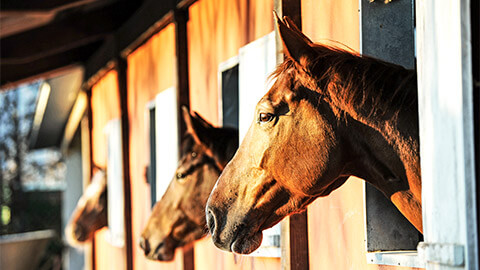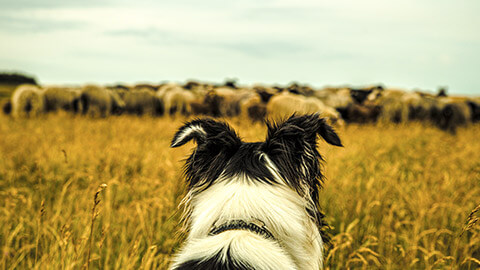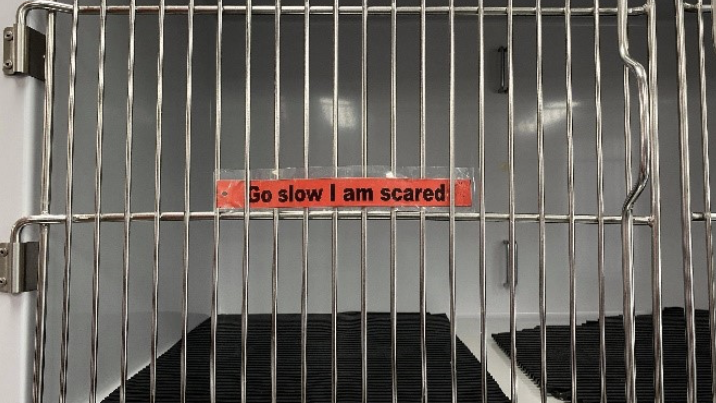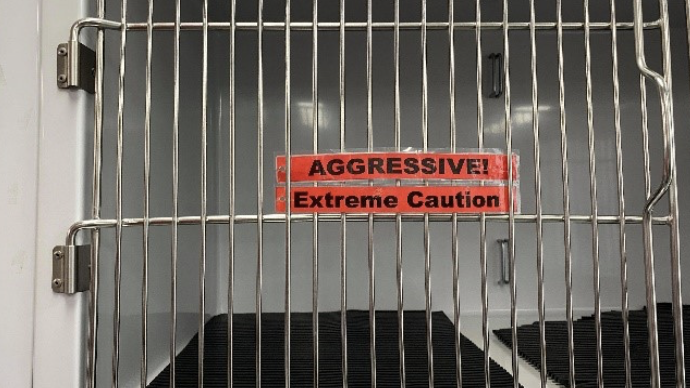Animals have natural or instinctive behaviours that are called movement behaviours. These behaviours can be periodic. For example, daily foraging behaviours or yearly migration behaviours. Movement behaviours may also change depending on the climate, season (which may include times of the year mating occurs), and changes in the environment or ecosystem.
Movement behaviours can also be seen in domesticated animals but can vary vastly from those in the wild. For example, domestic animals would not migrate in the change of season. This also applies to captively held animals, although some behaviours in captively held animals will be encouraged or remain unchanged. For example, Nocturnal animals would still sleep during the day, Snakes would still hibernate during the colder months and Zookeepers will still hide food around the enclosure to encourage foraging behaviours. However, if a snake is kept in captivity at a constant temperature, it may not feel the need to hibernate, and a zoo may decide to keep nocturnal animals in a dark environment during the day so that visitors can see them in their active environment.

Animal behaviour is the animal's coordinated response to internal and external stimuli.
Normal behaviours are coordinated responses to stimuli that humans consider typical for an animal and aren’t undesirable. When considering if a behaviour is normal for an animal, it is important to consider the context, intensity, and frequency of the behaviour.
For example, a dog barking during play would be considered normal but a dog constantly barking during the night would be considered undesirable. A cat licking its paw after it stepped on a spike would be considered normal but a cat that continually licks and bites at its paw causing trauma would be considered undesirable.
Animal behaviour has an underlying motivation as to why the animal is performing them. These motivations may be:
- the animal is feeling scared
- the animal is very hungry
- the animal wants company
- the animal is unsure or anxious.
Motivations do not include things like:
- the animal does not like me
- the animal was feeling spiteful.
It is also important to consider the species or breed of the animal when looking at behaviours. Some behaviours can be normal for the species but undesirable for the owner. For example, a cat scratching at furniture is normal but undesirable for the owner. In these situations, enrichment opportunities can resolve these undesirable behaviours. Introducing a cat scratch pole can stop the cat from scratching furniture in the house.
Undesirable behaviours are the coordinated responses to stimuli that humans find annoying or are unwanted by the human. It does not mean that this behaviour is abnormal. Different animals will display different types of undesirable behaviours.
So, what are undesirable behaviours?
Separation anxiety
When dogs are separated from their owners, they may display signs of separation anxiety. These behaviours include excessive barking, destructive behaviours, inappropriate urination, hypersalivation, or attempts to escape. Separation anxiety is linked to an animal’s dependency on its owner.
Tail chasing
Tail chasing falls under obsessive-compulsive disorders and is when the dog continually runs in a circle trying to catch its tail. Sometimes, if the dog succeeds in catching its tail, it may start to chew or self-mutilate the tail.
Vocalisation
This is when an animal is excessively vocal and may be considered a nuisance. This may be from boredom, stress, or fear. This can be seen in companion animals such as cats and dogs.
The vocalisation of undomesticated or farm animals can also be considered undesirable. Most local councils will have restrictions as to what animals can be kept in residential areas. For example, Chickens can be kept in residential houses, but roosters cannot.
Food or resource guarding
Food or resource guarding is commonly seen in companion animals, specifically dogs. This is when the animal displays behaviours so that it can control who and what has access to an object or food. This can also be seen with owners; dogs can become possessive over their owners. Dogs displaying guarding behaviours are often displaying aggressive body language. This could be growling, barking, or snapping.
Noise anxiety
Animals often display signs of fear or stress around loud noises. Noise-related anxiety may be triggered by things such as fireworks, thunder, or gunshots. This is commonly seen in dogs. During these episodes of anxiety, a dog may hide, try to escape, shiver or tremble or bark excessively.
Self-mutilation
This is when an animal continually licks or bites an area of the body or in birds, pluck their feathers. This can be seen in most species. For example, dogs, cats, mice, rabbits, and birds. Self-mutilation can be harmful as they often do not stop.
Destructive behaviours
Destructive behaviours can be seen in animals that are bored or have separation anxiety. Destructive behaviours can include chewing up toys or beds, ripping out plants, digging holes, or chewing at furniture. This can be seen in cats, dogs, birds, and horses.

Head Nodding
Head nodding can indicate excess energy, excitement, or irritation. Horses commonly display this behaviour if they are bored (in a stable most of the time) or flies or bugs are irritating them.
Take a break and do this fun little quiz. What animal are you?
Temperament typically refers to the attitude, mood, or behaviour of a person or animal. For example, if you were looking to adopt a dog, you may be leaning towards a dog with a sweet or friendly temperament rather than a vicious or aggressive temperament.
Animals can have different temperaments and it is important to consider this when handling and restraining animals. The animal's body language may help you determine the animal’s temperament.
You may also see temperament referred to as personality, disposition, or coping style.
Different breeds may have a predisposition to a certain temperament. This is often linked to the group that they belong to.
For example, Border collie temperaments are closely linked to their jobs as herders. Border collies are also typically playful and have lots of energy. Whereas a chihuahua is typically feisty but loving and loyal to its owners. They are also known to be confident and courageous.

Common, basic body language seen in dogs include:
- Happy
-
Playful
- Content
-
Relaxed
- Stressed or unsure
- Submissive
-
Anxious
- Frightened
-
Terrified
- Fearful
-
Aggressive
Always remember:
- A dog with a wagging tail does not mean they are happy or friendly. You need to pay attention to the tail action.
- A dog that is yawning can indicate the dog is stressed not that they are tired.
Common, basic body language of cats includes:
- Relaxed/Friendly
- Fearful
- Frightened
- Aggressive (This can be either defensive or offensive)
Cats also use their body language to show affection. Signs of affection include:
- Slow blinking
If a cat is gently blinking it indicates love and trust. - Purring
This indicates happiness and contentment. - Rubbing against you
This is when a cat rubs against your legs or body using its face, cheeks, or gums. During the rubbing, the cat is sharing their scent with you and declaring you family. - Vocalisation (Meowing)
Meowing can mean several things, but it is a way of getting your attention and asking for some affection. - Head bunting
This is a universal cat greeting for loved ones and is a bonding ritual. It is like humans giving each other a big hug.
Many risks and hazards can be associated with an animal’s behaviour and temperament. It is extremely important to always observe an animal at a distance, to get an understanding of its behaviour, body language, and temperament. Communication is also extremely important when it comes to animal behaviour and temperament. Always ask a client or owner what their animal is normally like with people and other animals, this will give you an insight into what they are like and the precautions you need to take. For example, if an owner advised that their dog is normally dog aggressive, you may decide to house the animal in a quiet room where there are no other dogs.
Whilst the animal is in your care, it is important to update their record and place warnings/notes on their cage when you observe certain behaviours. For example, if an animal were to become aggressive or you noticed they were growling when you came near the cage, it would be appropriate to put a caution sign on the cage.


Some risks and hazards can include:
- animal bites
- scratches
- envenomation
- kicks
- crush injuries.
